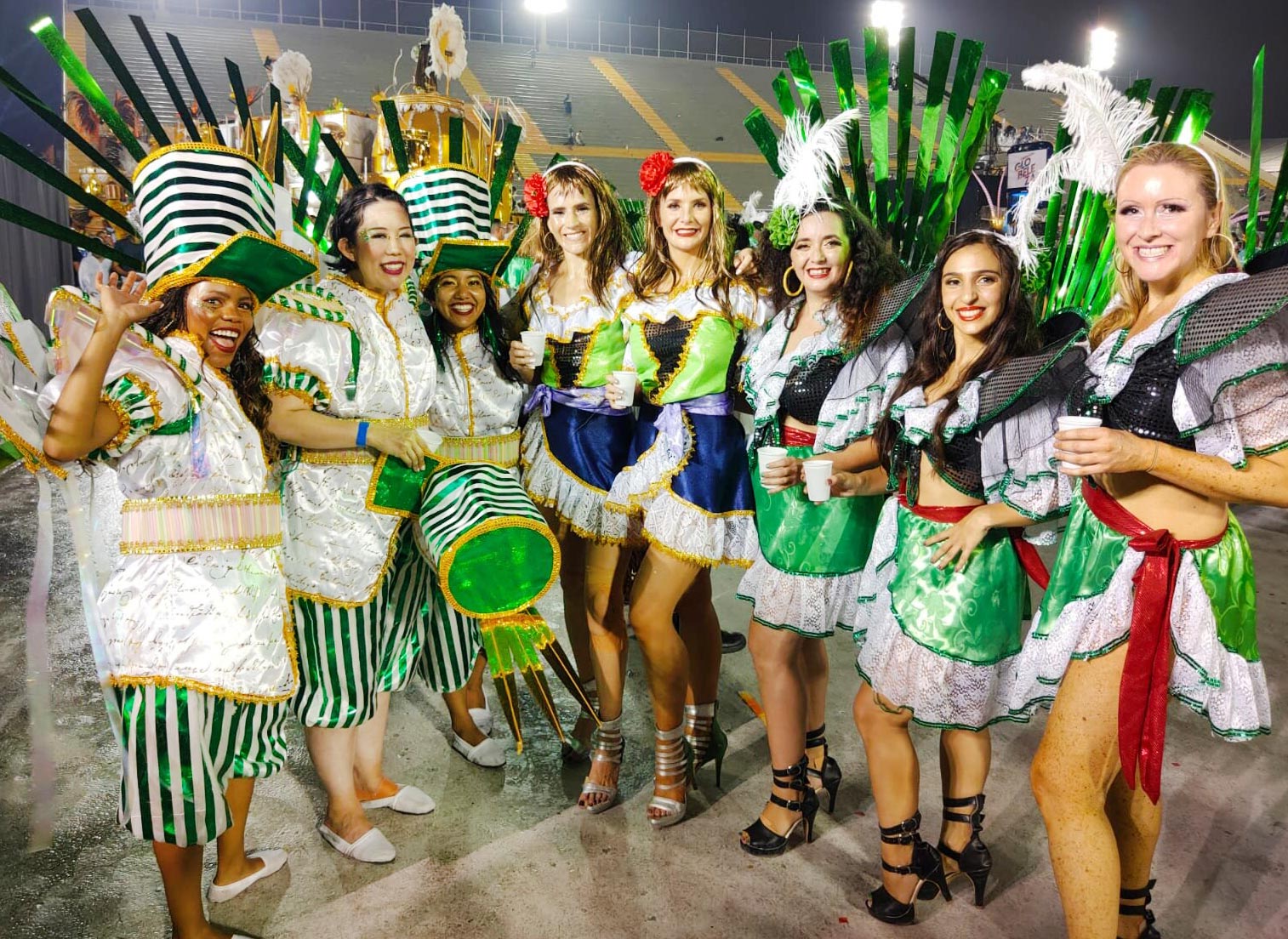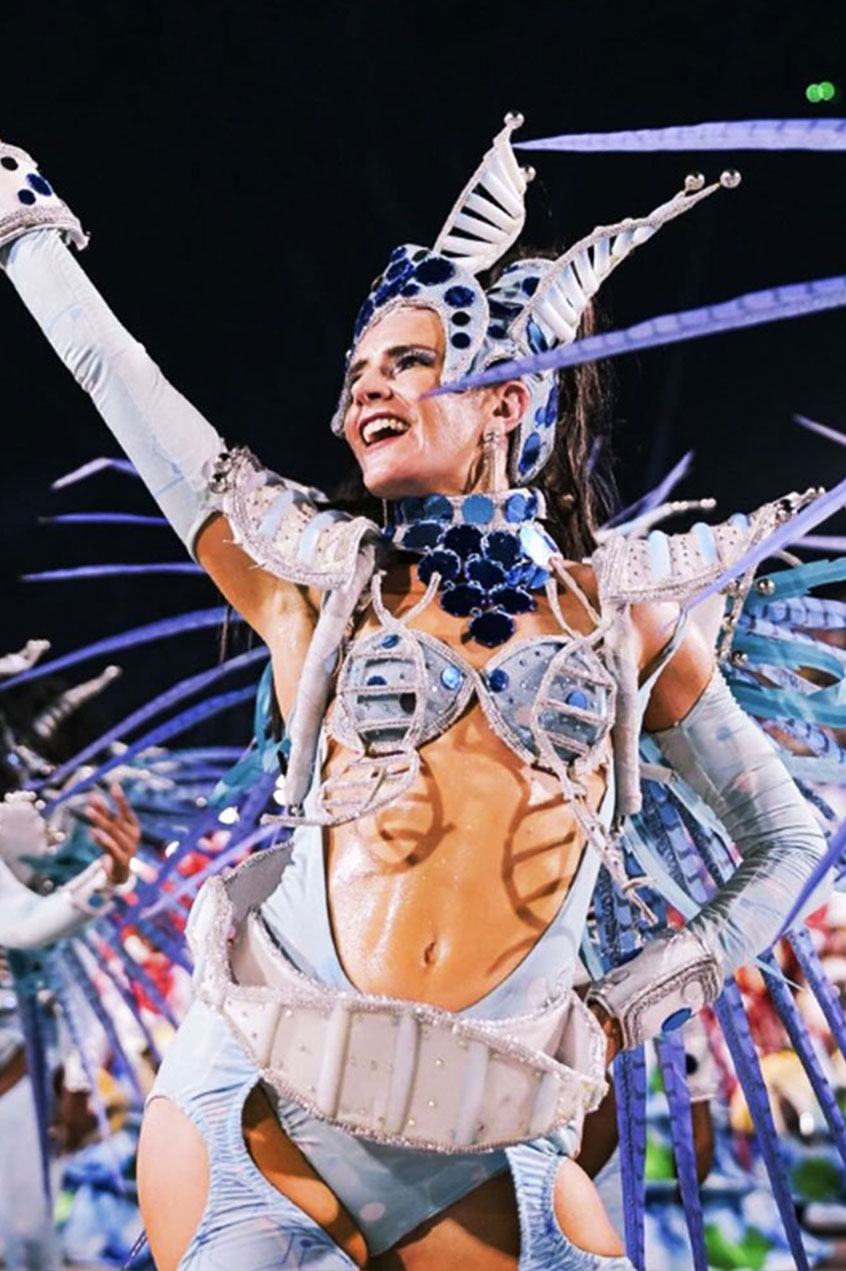Brazilian Samba
What is Brazilian Samba?
In the 20th century, samba began its emergence as the most popular musical form of Rio de Janeiro, displacing previous forms such as maxixe and choro. Over time, as the music increasingly emphasised African derived rhythm and percussion in combination with European harmonic and melodic traditions, the music took on deep cultural significance. Samba, a music born of miscegenation that is uniquely and unmistakably Brazilian, became closely linked to evolving perceptions of “racial democracy” and competing definitions of the true, authentic national identity. (Walsh, 2010)

Fisica Dance students and teachers parading at the famous Rio de Janeiro Carnaval in 2020 with Rio Samba School, Império da Tijuca
Samba is a rich, syncopated rhythm based on the drums and dances of Angola and Congo. It was influenced by many different cultures that migrated to Brazil. Brazil is a melting pot of cultures (Mestiçagem) and all of them influenced what Samba and Carnaval is today.
In the Afro-Brazilian religion, “Samba means to invoke your personal Orixá” or in other words, pray to a god or saint.
Samba has different sub-genres and dance styles, from the fast-paced Carnaval samba style with all its feathers, bikinis and drums to a melody partner’s dance called Gafieira. “Samba. The word itself is musical, percussive.”
The samba dance is considered one of the most valued cultural expressions to Brazil; it has become part of the Brazilian identity and it is considered “the heartbeat” of Rio de Janeiro and São Paulo’s Carnaval.
In Fisica Dance samba dance classes, you’ll experience the Carnaval Passista style of samba with influences of Gafieira and Samba de Roda.
Let’s Samba!
1. Walsh, Lindsay Carolyn, “Brazil is Samba: Rhythm, Percussion, and Samba in the Formation of Brazilian National Identity (1902-1958)” (2010). Honors Theses – All. 498.

